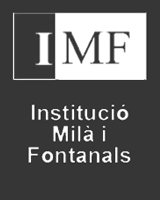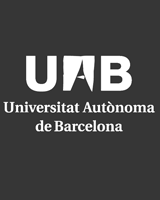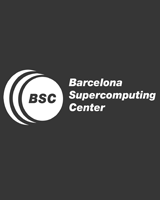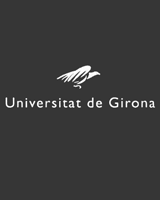Groups

GROUP 1 (G1) - INSTITUCIÓ MILÀ I FONTANALS · CSIC
Has a focus on the study of resource exploitation and prehistoric landscapes. This is carried out through an interdisciplinary approach that includes Bioarchaeology, Geoarchaeology and GIS technology. The group has long-standing expertise in the processes of domestication in the Old World, as well as hunter-gatherers/agriculturalist and human/environment relationships.
Group 1:Marco Madella (PI), Yolanda Aixelá Cabré, Josep Martí Pérez, David Ortega Cobos, Enrico R. Crema, Jorge Caro Saiz, Juan José García-Granero Fos, Francesc Cecilia i Conesa, Jonàs Alcaina Mateos, Stefano Biagetti, Eugenio Bortolini, Carla Lancelotti.

GROUP 2 (G2) - INSTITUCIÓ MILÀ I FONTANALS · CSIC
Has been working in Ethnoarchaeology for many years with several international projects where ethnoarchaeology is used as an experimental and conceptual framework to test archaeological methods and techniques against empirical data from historical societies. The group have a strong expertise in hunter-gatherer archaeology and social transformations in h-g groups.
Group 2: Débora Zurro Hernández (PI), Myrian Álvarez, Ivan Briz Godino, Adriana Edith Lasa.

GROUP 3 (G3) - INSTITUCIÓ MILÀ I FONTANALS · CSIC
Has been working in the Near East for over two decades focusing on the origins and spread of agriculture, and the beginning of sedentarism. A spotlight of the group research is on exchange and trade networks developing with the transition from gathering to farming.
Group 3: Juan José Ibáñez Estévez (PI), Jesús Emilio González Urquijo, Eneko Iriarte Avilés, Lamya Khalidi.

GROUP 4 (G4) - UB · DEPARTMENT OF HISTORY, ANCIENT HISTORY AND ARCHAEOLOGY
Has been working in Uzbekistan since 2005. The group studies Social Change in complex societies of Antiquity and has a strong focus on Landscape Archaeology. It has pioneered the application of new techniques of archaeometry to archaeology and has one of the most important analytical databases on ceramics in Europe.
Group 4: Josep Mª Gurt Esparreguera (PI), Sebastian Stride, Enrique Ariño Gil, Verónica Martinez Ferreras, Ana María Sánchez del Corral Jiménez, Andreas Angourakis.

GROUP 5 (G5) - UAB · ETHNOECOLOGY LABORATORY
Currently has ethnoecology research activities in Bolivia, Peru, Mexico, Marroc, India, and Spain, along lines of research focused on the study of local environmental knowledge, cultural change among indigenous peoples, emerging conservation tools, indigenous peoples and community conserved areas, global environmental change and small-scale societies, and the interactions between plants and people.
Group 5: Victoria Reyes-García (PI), Isabel Ruíz-Mallén, Matthieu Salpeteur, Mar Grau Satorras, Christine Gamboa.

GROUP 6 (G6) - UAB · DEPARTMENT OF PREHISTORY
Comes with a strong expertise in South America prehistory and a long-term know-how on computer applications in archaeology, notably in the domains of spatial analysis, statistics, artificial intelligence and computer-aided visualization.
Group 6: Joan Anton Barceló Álvarez (PI), Florencia Del Castillo Bernal, Igor Bogdanovic.

GROUP 7 (G7) - BARCELONA SUPERCOMPUTING CENTER · CENTRO NACIONAL DE SUPERCOMPUTACIÓN
Focuses its research activities on developing, adapting and optimizing numerical applications for scientific problems in present and future supercomputer systems. Their work goes from the numerical kernels to the mathematical modelling of the physical phenomena. The department has initiated a new research trend, applying its expertise in the design of scientific simulations to Social Sciences and Humanities.
Group 7: Xavier Rubio-Campillo (PI), Alexis Torrano Martínez, Angel Heriberto Coppola Owen, Cristóbal Samaniego Alvarado, Cristina Montañola Sales, Guillem Francès Medina

GROUP 8 (G8) - UdG · DEPARTMENT OF PHYSICS
Have a long-standing collaboration with group G6 on modelling in prehistory. The main interests of the group are the propagations of fronts of reaction-dispersion and computer sciences analytical techniques and simulation. They have been studying the Mesolithic/Neolithic transition collaborating with internationally recognised experts in this area.
Group 8: Joaquim Fort Viader (PI), Toni Pujol Sagaró, Joaquim Pérez Losada, Josep Maria Massaneda Clares, Josep Maria Humet Coderch, Bruna Comas Hervada, Laura Mameli Iriarte, Víctor López de Rioja, Neus Isern Sardó.

GROUP 9 (G9) - UPF · DEPARTMENT OF COMPUTER SCIENCE
Studies computational models of reasoning, action, learning, and perception. The approach of the group is focused on inference methods (mainly in Automated Planning) that permit to solve efficiently a large set of models. A key goal in their current work is to crack the central AI problem, producing a functional model-based approach to the general action selection problem where the desired behaviour is inferred automatically from a suitable description of the actions, sensors, and goals, i.e. a scalable solver or "brain" that can effectively integrate information about actions, sensors, and goals, to direct in real-time the actions of an autonomous agent.
Group 9: Hector Geffner (PI), Anders Jonsson, Héctor Palacios, Alexandre Albore, Filippos Kominis.

GROUP 10 (G10) - UBU · DEPARTMENT OF CIVIL ENGINEERING
Is part of the Social Systems Engineering Centre (INSISOC). Its interests are focused in the study of complex systems and the group has applied different methods to characterize complexity in different research fields. The methodologies developed in recent years in artificial intelligence and within the field of systems thinking allows them to construct models to help understand complex systems. INSISOC has been a pioneer in the design of mechanisms that enable agents’ interactions in simulated models of complex systems by applying techniques and tools to pursue the handling of the complexity characterization and modelling the aggregate behaviour of the system under study.
Group 10: Ricardo del Olmo Martínez (PI), Miguel Ángel Manzanedo del Campo, Lourdes Saiz Bárcena, José Manuel Galán Ordax, José Ignacio Santos Martín, Luis Izquierdo Millán, Juan José Lavios Villahoz, María Pereda García.

GROUP 11 (G11) - UAB · DEPARTMENT OF SOCIOLOGY
Studies the possibilities offered by simulation computer models to theorise and analyse social processes and institutions. The use of computer science to generate, develop and observe the “simulated social life” opens interesting perspectives in epistemology and methodology as a connecting bridge between different disciplines (e.g. AI, programming, etc). The research lines of the group are the methodological development and the generation of artificial societies.
Group 11: José Antonio Noguera Ferrer (IP GSADI), Francisco José Miguel Quesada (IP SSASA), Antonio Llàcer Echave, David Casassas i Marqués, Sandra González Bailón, Francisco José León Medina, Francisco Linares Martínez, Luis Miguel Miller Moya, Jordi Tena Sánchez.
